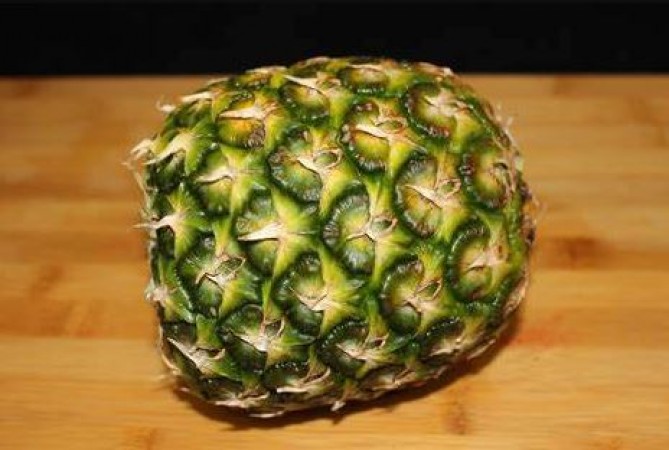
The pineapple, scientifically known as Ananas comosus, is a tropical fruit that has captured the hearts of people worldwide with its sweet and tangy taste. Beyond its delectable flavor, the pineapple is a unique botanical marvel. Contrary to popular belief, it is not a single fruit but rather a cluster of many small individual fruits, known as "fruitlets," fused together. In this article, we will explore the intriguing world of the pineapple, from its structure and nutritional benefits to its cultural significance and modern applications.
What is a Pineapple?
Definition and Origin
The pineapple is believed to have originated in South America, specifically in the regions of Paraguay, southern Brazil, and northeastern Argentina. Early European explorers encountered this exotic fruit during their voyages and brought it back to their home countries, introducing it to various parts of the world.
Botanical Classification
The pineapple belongs to the Bromeliaceae family, which includes other tropical plants like Spanish moss and air plants. It is a tropical plant that thrives in warm climates and is well-known for its spiky crown and sweet, juicy flesh.
The Structure of Pineapple
Fruitlets and Their Formation
At first glance, the pineapple appears to be a single large fruit, but in reality, it is a composition of multiple fruitlets. Each hexagonal fruitlet, covered with scale-like structures known as "eyes," contains a seed. These fruitlets grow together and fuse to form the complete pineapple fruit we enjoy.
The Core and Crown
The core of the pineapple, often discarded while consuming, is actually edible. It possesses a more fibrous texture compared to the juicy flesh. The crown, on the other hand, is the green spiky top of the pineapple, which can be replanted to grow a new pineapple plant.
Nutritional Benefits of Pineapple
Vitamins and Minerals
Pineapple is a rich source of essential vitamins and minerals, including vitamin C, vitamin A, vitamin B6, calcium, potassium, and manganese. These nutrients contribute to overall well-being and support various bodily functions.
Enzymes and Antioxidants
Bromelain is an enzyme present in pineapples that aids in digestion and has anti-inflammatory properties. Additionally, the fruit contains antioxidants that help combat free radicals, promoting a healthy body.
Health Benefits of Pineapple Consumption
Digestive Aid
Due to the presence of bromelain, pineapples are known to aid in digestion. This enzyme breaks down proteins, making it easier for the body to absorb nutrients from food.
Immune System Booster
Vitamin C, a potent antioxidant found in pineapples, plays a vital role in supporting the immune system, helping the body fight off infections and illnesses.
Anti-Inflammatory Properties
Bromelain's anti-inflammatory properties have been associated with reducing inflammation and alleviating symptoms in various inflammatory conditions.
Culinary Uses of Pineapple
Fresh Consumption
Enjoying fresh, ripe pineapple is a delight in itself. Sliced, diced, or eaten in chunks, it makes for a refreshing and healthy snack.
Pineapple Juice
Pineapple juice is a popular beverage worldwide, known for its tropical flavor and numerous health benefits.
Pineapple in Cooking
The sweet and tangy flavor of pineapple makes it a versatile ingredient in both sweet and savory dishes. It adds a tropical twist to salads, stir-fries, desserts, and even pizza!
Pineapple Varieties
Common Varieties
Some of the common pineapple varieties include Smooth Cayenne, Queen, and Red Spanish, each with its distinct taste and characteristics.
Unique Varieties from Different Regions
Different regions across the globe cultivate unique pineapple varieties, showcasing the diversity and adaptability of this fruit.
Pineapple Cultivation and Harvesting
Growing Conditions
Pineapple cultivation requires a warm tropical climate with well-draining soil. It is commonly grown in countries like Thailand, the Philippines, and Costa Rica.
Harvesting Techniques
Pineapples are hand-harvested when fully ripe to ensure the best flavor and quality. Careful harvesting techniques prevent damage to the fruitlets.
Pineapple in Culture and Traditions
Symbolism and Cultural Significance
The pineapple holds symbolic importance in various cultures, often representing hospitality, warmth, and friendship.
Pineapple in Folklore and Myths
Throughout history, pineapples have been woven into folklore and myths, adding an air of mystery and enchantment to their allure.
Pineapple in Modern Industries
Pineapple in the Food Industry
The food industry utilizes pineapples in various forms, including canned pineapple, pineapple preserves, and pineapple-flavored products.
Pineapple in the Cosmetic Industry
Extracts from pineapples are incorporated into skincare products due to their exfoliating and hydrating properties.
Pineapple in the Textile Industry
Innovative techniques use pineapple fibers to create sustainable and eco-friendly textiles.
Interesting Facts about Pineapples
Potential Side Effects and Precautions
While pineapple consumption offers numerous benefits, it may not be suitable for everyone. Some individuals may experience allergic reactions or digestive issues when consuming excessive amounts.
Sustainability and Pineapple Farming
As the demand for pineapples increases, sustainable farming practices become crucial to protect the environment and support local communities.
The pineapple's cluster of fruitlets, fused together in harmony, presents us with a true wonder of nature. Beyond its delicious taste, the pineapple offers a treasure trove of nutrients, health benefits, and cultural significance. From being a symbol of hospitality to its applications in various industries, the pineapple continues to captivate and enrich our lives.
A Traveler's Guide to Delectable Delights and Precautions: What to Eat and Avoid
"Indian Cuisine: A Melting Pot of Diverse Traditions and Modern Trends"
Indigenous Foods: The Delicious Path to Global Culinary Diversity